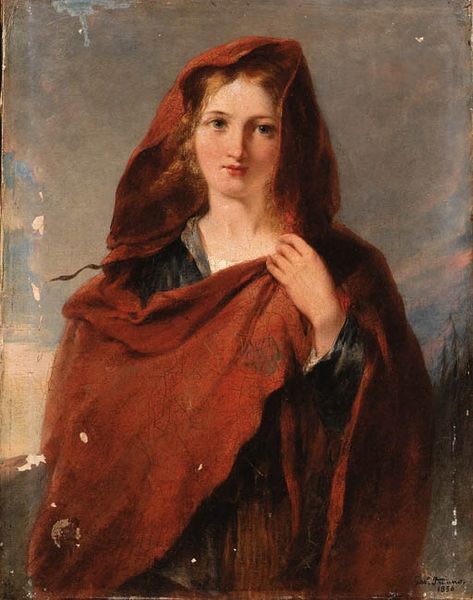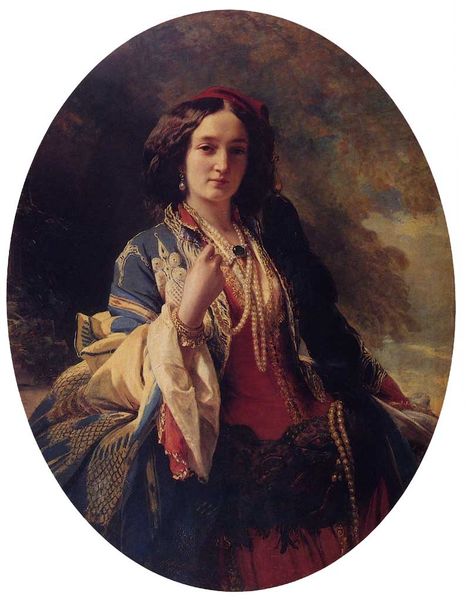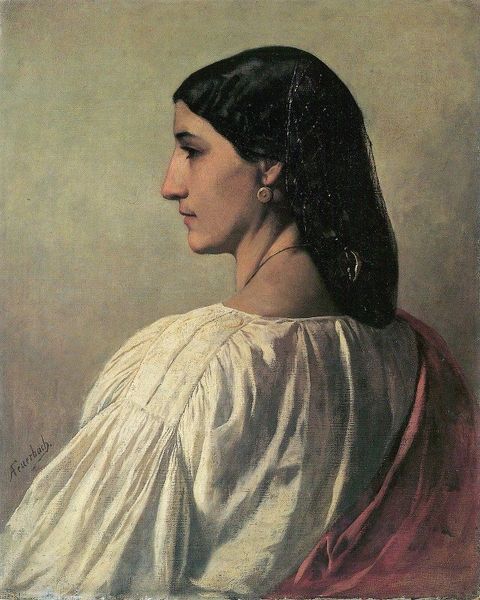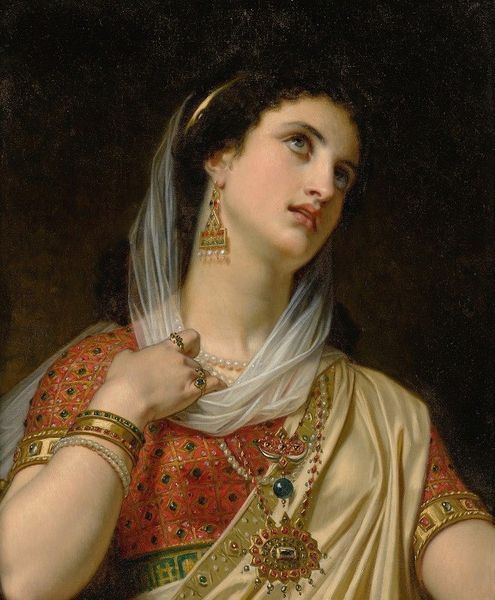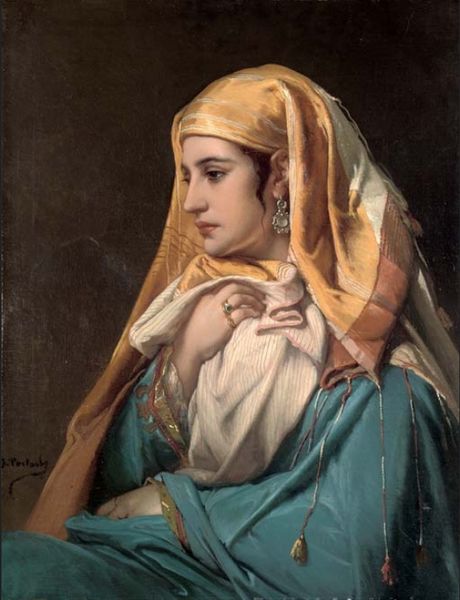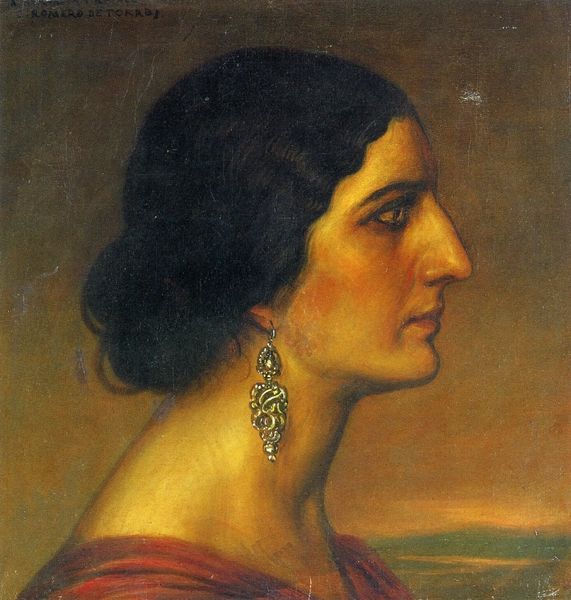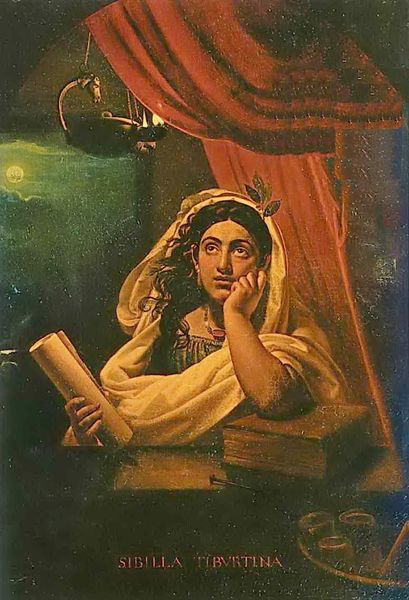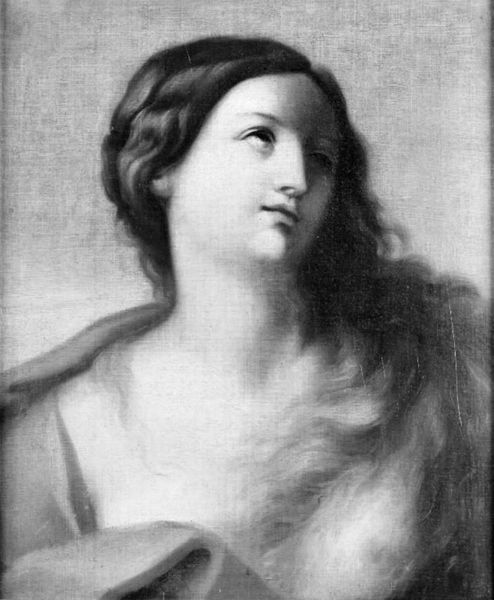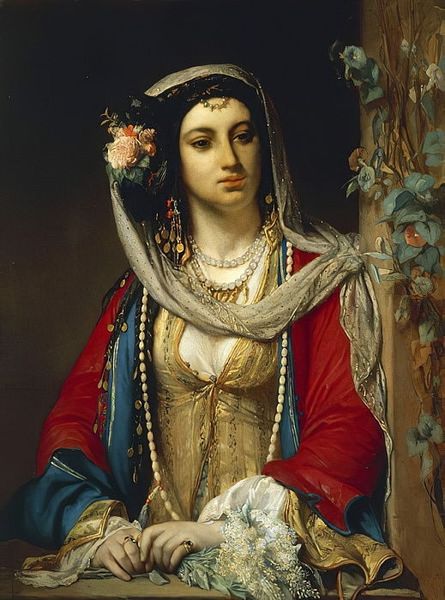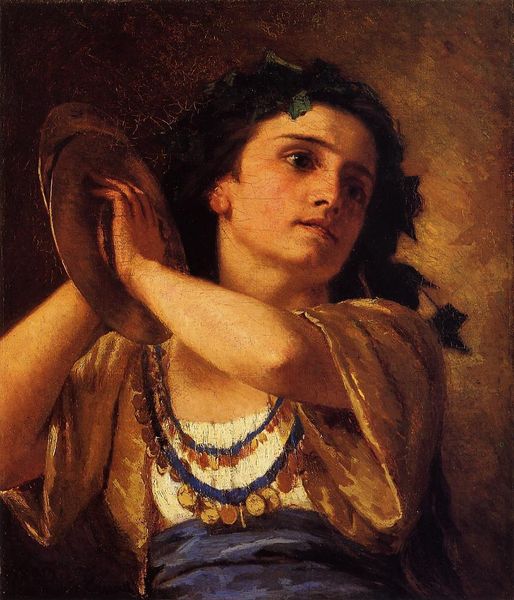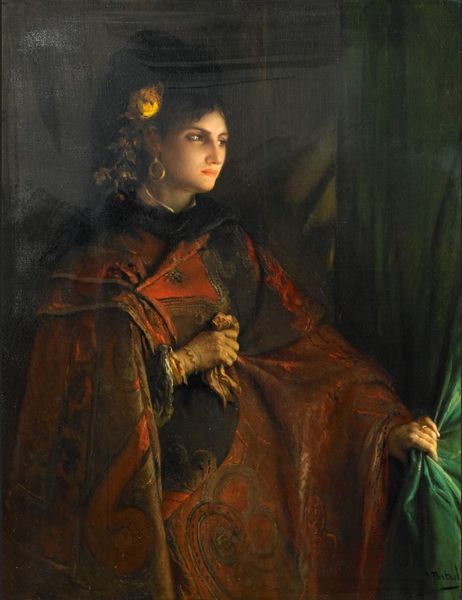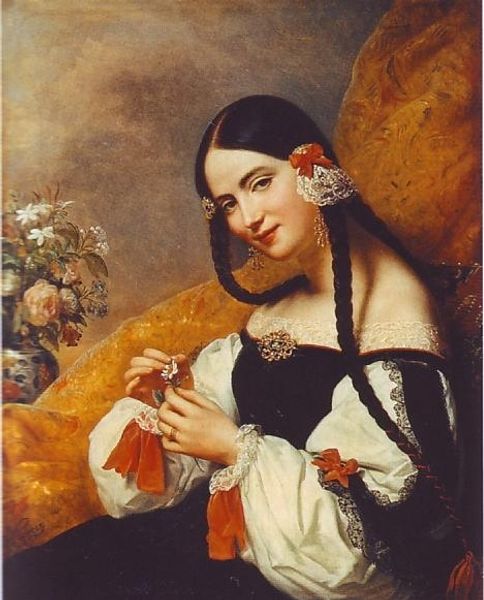
oil-paint
#
portrait
#
gouache
#
oil-paint
#
romanticism
#
watercolour illustration
#
history-painting
Copyright: Public domain
Curator: Welcome. Here, we have Constantin Daniel Rosenthal's "Revolutionary Romania" from 1848, executed in oil paint. Editor: The overall effect is… subdued. Despite the title, there’s a contemplative stillness, even sadness, in her gaze. And I am immediately drawn to the traditional blouse and the Romanian flag that she is holding. What do you notice, looking closer at this image as an art object? Curator: I see the portrait within the classical triangular composition, which immediately signifies a focus on an aesthetic tradition even amidst this revolutionary subject matter. Rosenthal deftly balances a formal structure with Romanticism, a genre frequently focusing on myth and emotional experience, making it the dominant style. Look at her gaze and body language! The curve of the composition emphasizes the woman's figure and gaze, creating an image about movement and the spirit of change, but controlled change nonetheless. The symbolism is striking. Editor: I'm also noticing how the light catches on her blouse, especially where the red embroidery bleeds slightly, making its craft elements seem more vital, more… alive. Her blouse becomes the main material form expressing "Romania". It emphasizes how deeply this kind of identity is entrenched in folk custom. Curator: Exactly. See, I'm drawn to how the embroidery leads the eye, but its primary function, I believe, is about reinforcing formal balance through a unity of motifs and the overall symbolism that we decode through visual cues. Editor: Perhaps, but I think it's a lot more involved than that. In looking closely at this blouse we're not simply decoding geometric designs—we are watching and observing how a national and cultural costume and a history of craft are materially formed into an image about national consciousness, the importance of local labour. The very brushstrokes mimic textile construction! Curator: Perhaps that's a valid reading, too, but I find that a close analysis proves to have multiple points. What I'm saying, in closing, is that its structuralist construction enables layers of rich interpretation. Editor: I agree. And maybe at its heart is also about the power of simple cloth, dyes, and the act of wearing to speak about much broader contexts like revolution. It’s a remarkable painting to consider.
Comments
No comments
Be the first to comment and join the conversation on the ultimate creative platform.
